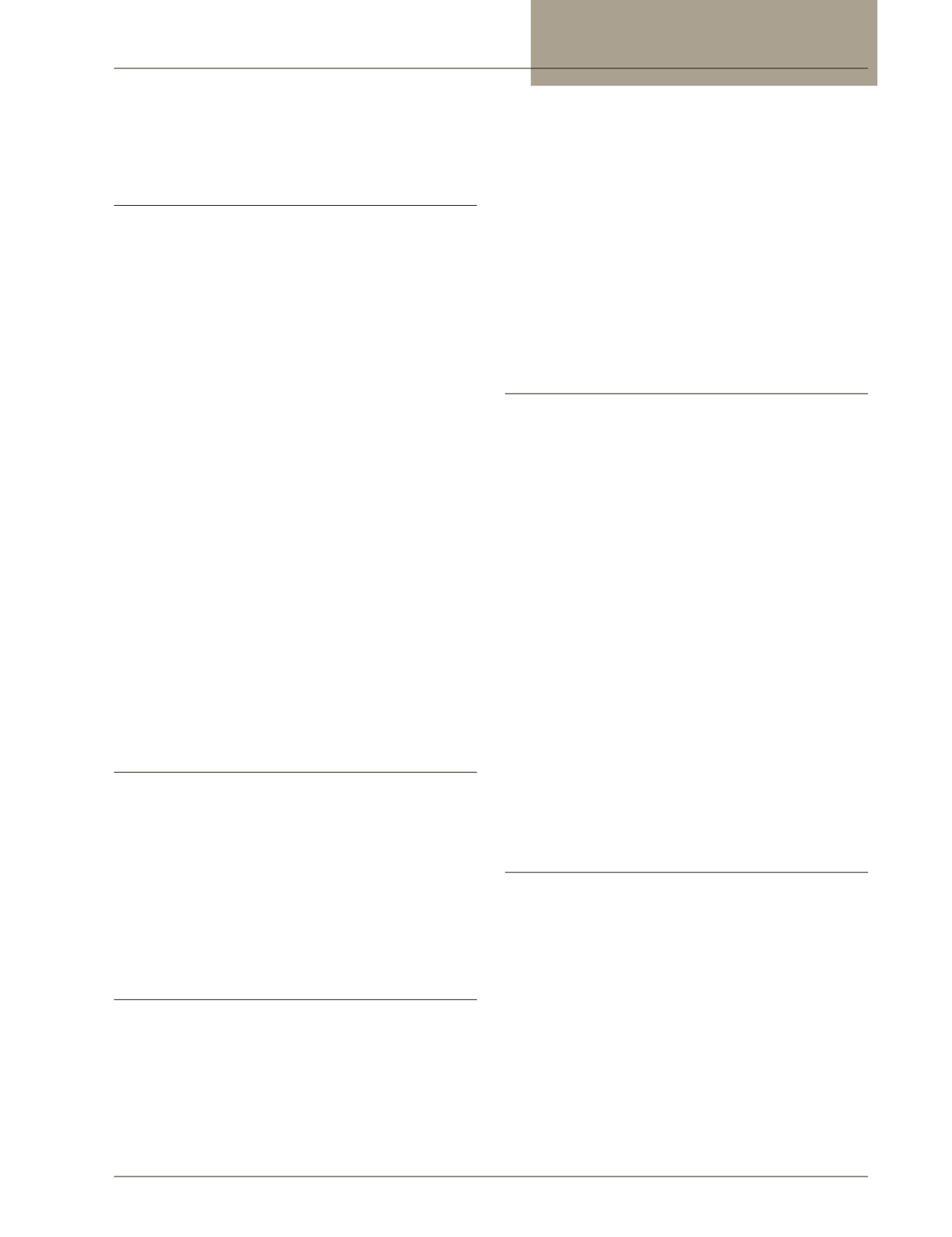

DCMS online
. org
Northeast Florida Medicine
Vol. 66, No. 4 2015
33
Inflammatory Bowel Disease
associated with a three to fourfold increased risk, empha-
sizing that disease activity be defined based on microscopic
involvement.
12
The detection of flat dysplastic lesions can
be challenging when there is quiescent colitis and active
disease present. Similarly, the presence of pseudopolyps also
leads to higher risk because true dysplasia is more difficult
to see and these benign polyps are a marker for previous
severe inflammation.
12
Current surveillance guidelines
The goal of surveillance colonoscopy in chronic UC is the
detection of dysplasia. Dysplasia detection with standard
white light colonoscopy relies on identifying and removing
lesions at colonoscopy and obtaining 33 random biopsies
throughout the colon. This is based on the argument that
certain dysplasia is “invisible.” It has been estimated that 33
biopsies achieve a 90 percent positive predictive value for
dysplasia.
13
However, yields on random biopsy are very low
and can range from 0.1 to 0.2 percent or one per thousand
to one per 500 random biopsy samples.
14
Surveillance guidelines
5
start with the recommendation
that all patients with UC should undergo screening colonos-
copy with extensive biopsies after eight years of symptoms
to determine disease extent. These guidelines also require a
patient to have an adequate colon preparation and to be in
endoscopic remission tomaximizedysplasiadetection. Patients
with pan-colitis or left sided colitis should begin surveillance
withinone to two years later.This also applies toCrohn’s colitis
where at least one-third of the colon is involved. Patient with
PSC and colitis begin surveillance immediately at diagnosis.
Surveillance continues every one to two years.
The significance of dysplasia
Dysplasia is defined as low-grade or high-grade based on
histological appearance and on expert pathologist inter-
pretation, confirmed by a second pathologist. The degree
of dysplasia has been shown to predict the likelihood of
CRC at colectomy.
15
Nearly 20 percent of patients who
had colectomy for low-grade dysplasia and 42 percent for
high grade had CRC in the colectomy specimen. Where a
visible lesion, termed a dysplasia associated lesion or mass
(DALM), is found, 43 percent had CRC in the colectomy
specimen.
15
When the pathologist was unsure if dysplasia
was present, one-third progressed to high-grade dysplasia or
cancer. These sobering findings, in part, led to the aggressive
recommendation for colectomy for DALM lesions, high-
grade dysplasia and low-grade dysplasia.
Disease extent and duration
Ulcerative colitis is classified based on anatomic extent
for medical therapy and CRC surveillance. Proctitis or
proctosigmoiditis refers to any inflammation from the anus
up 30 cm; left-sided colitis extending above 30 cm with
any involvement up to the splenic flexure; and any disease
extending proximal to the splenic flexure is called extensive
or pancolitis. For disease initially confined to the lower colon
there is a significant risk that it may spread more proximally.
The progression of proctosigmoiditis to left-sided colitis was
estimated at 50 percent and for left-sided to pancolitis 70
percent at 25 years.
6
These findings impact the approach
to surveillance.
The risk of CRC for proctitis is thought to be no higher
than a non-colitis population, whereas risk for left sided
colitis and pancolitis is threefold and six to fifteen-fold
that of the general population respectively.
3,7
Since Crohn’s
disease can involve any part of the colon, significant extent
is loosely defined as at least one-third of the colon involved
with rates of CRC similar to UC based on extent.
5
Further-
more, extent is based on microscopic involvement so that
biopsy is needed.
The risk of CRC in UC has been estimated at two percent
at 10 years, eight percent at 20 years and 18 percent at 30
years duration.
8
These findings have shaped current surveil-
lance guidelines.
5
While more recent studies have suggested
that the rates may actually be lower, they are increased and
vary based on the population studied.
9
Primary Sclerosing Cholangitis
Primary sclerosing cholangitis (PSC) is a chronic inflam-
matory disease of the bile ducts. It is strongly associated
with colonic IBD with at least 75 percent of PSC patients
having chronic colitis.
10
Chronic colitis in PSC tends to
be a milder, often subclinical, disease but with a fourfold
increase in CRC risk compared to UC alone.
11
Given this
strong association and high cancer risk, all patients with
PSC should undergo colonoscopy with random biopsy. If
chronic colitis is found, surveillance colonoscopy begins
at diagnosis.
Minor Risk Factors
While not considered in existing surveillance guidelines,
family history of CRC, disease activity, and pseudopolyps
(benign inflammatory polyps) also increase the risk of CRC
in UC.
12
Family history of sporadic (non-colitis associated)
CRC increases the risk twofold.
12
While age at diagnosis
may increase the risk, results are inconsistent. Disease ac-
tivity as measured by histological inflammation has been
















